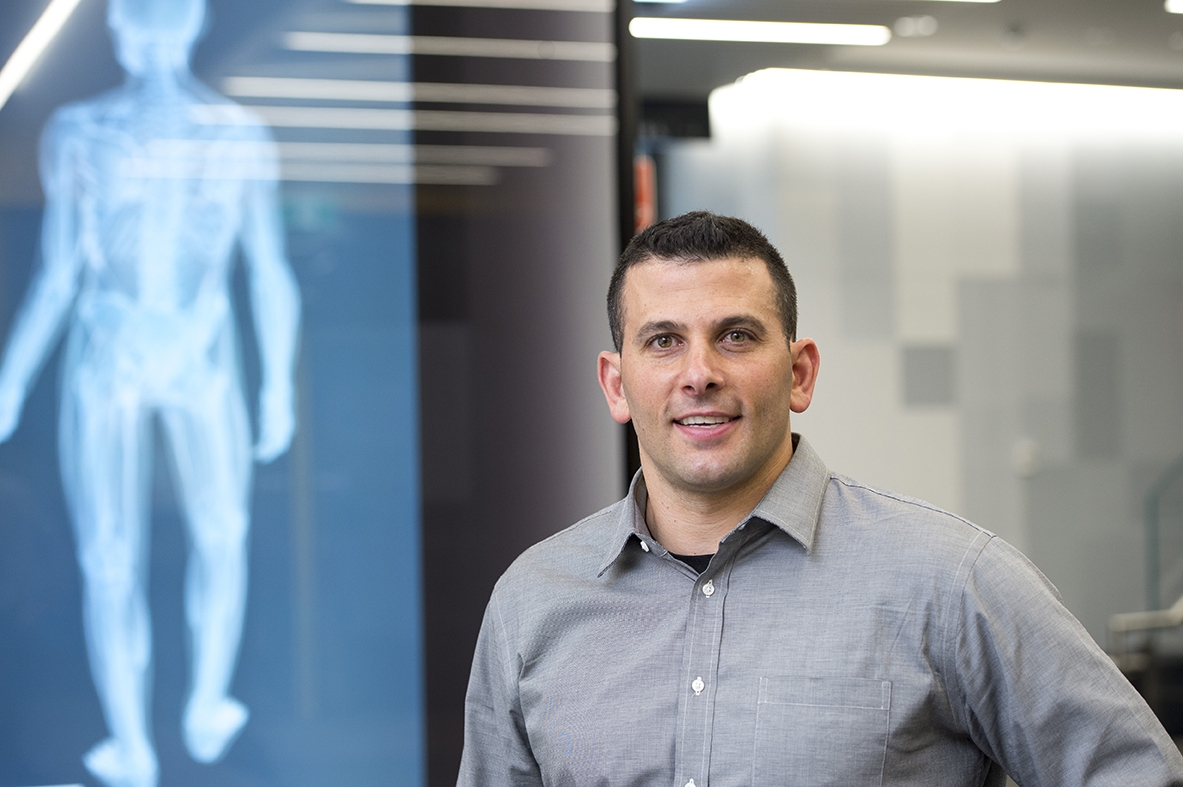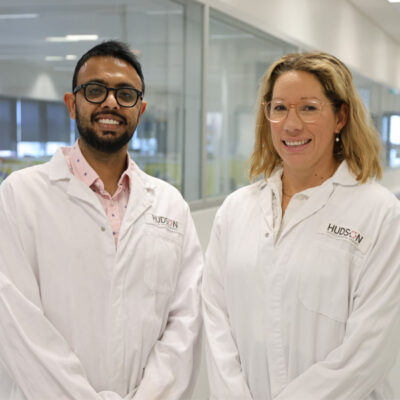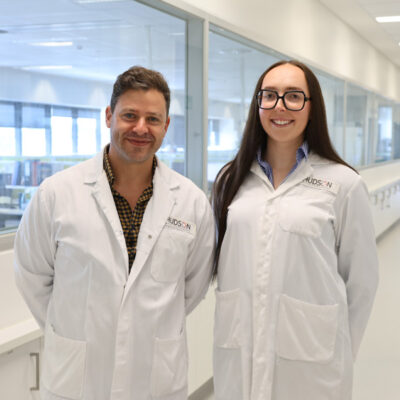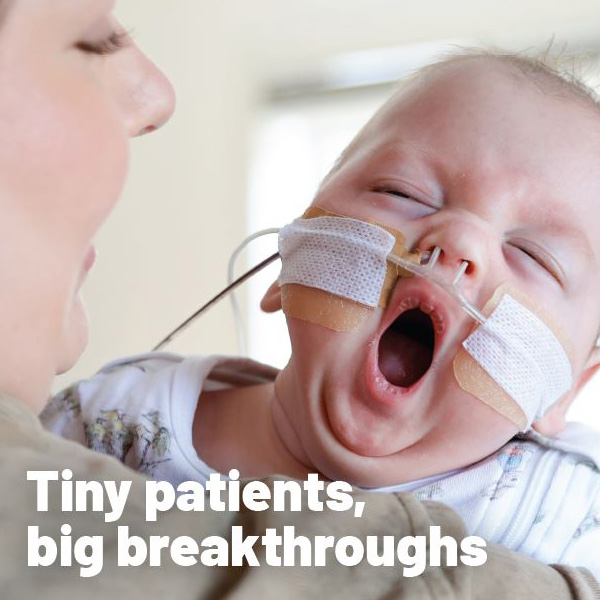Breathing life into newborns
By Hudson Institute communications

A world-first Hudson Institute and Monash University study has analysed how healthy newborns transition to breathing straight after birth. This new data will provide a baseline that can be used to develop new and better clinical practices that will help babies who struggle to breathe when they’re born.
Each year, more than five per cent of all newborns worldwide need help breathing immediately after birth, including babies born in Australia. More than 800,000 infants, predominantly in developing countries, die annually as a result of breathing complications at birth.
The ‘RISE study’, a collaboration with the Royal Women’s Hospital, measured the volume of air and the quantity of carbon dioxide a newborn breathes out, from their very first breath through to the first hour after birth.
Led by Hudson Institute and Monash University PhD student and clinician, Dr Douglas Blank, the RISE team wanted to understand how best to help an infant who is not breathing after birth. “To do that, we had to first understand the complex changes that occur as a newborn begins to use their lungs for the first time.”
A team member, who was in the delivery room and with approval from the parents, fitted a face mask onto the newborn immediately after birth to measure breathing for the first 10 minutes of the baby’s life while the midwives provided routine care the baby received its first cuddle with its parents.
Some novel findings that surprised researchers were the large volume of air babies take in after birth and the fact that their largest breaths were taken well after their first few gasps for air.
“It was interesting to discover that babies take massive breaths, more than twice the level of a normal baby’s breath and that the largest breaths were between 82 seconds to six minutes after birth,” Dr Blank said.
Paving the way for future research
Now that the study has established a baseline of what is normal for healthy newborns, either or both measurements could be used in clinical settings.
“The most cost effective method to measure babies who struggle to breathe straight after birth is the amount of carbon dioxide a baby exhales. This measurement can be taken with a simple piece of equipment that is available in most delivery rooms,” Dr Blank said.
“The information gained from this study will inform how to help newborns begin breathing after birth, it will also provide important reference data that can be used to conduct further studies that will ultimately improve clinical care,” Dr Blank said.
Facts : Adapting to life outside of the womb
- While a baby is growing in its mother’s womb, the placenta helps the baby to ‘breathe’ via the oxygen and carbon dioxide that flows through the blood in the placenta.
- When a baby is born, its lungs are filled with fluid and not yet inflated.
- A healthy baby will take its first breath within 10 seconds of being born.
- Once the baby takes its first breath, the lungs inflate and begin working on their own, moving oxygen into the bloodstream and removing carbon dioxide by exhaling.
About Hudson Institute
Hudson Institute’ s research programs deliver in three areas of medical need – inflammation, cancer, women’s and newborn health. More
Hudson News
Get the inside view on discoveries and patient stories
“Thank you Hudson Institute researchers. Your work brings such hope to all women with ovarian cancer knowing that potentially women in the future won't have to go through what we have!”





